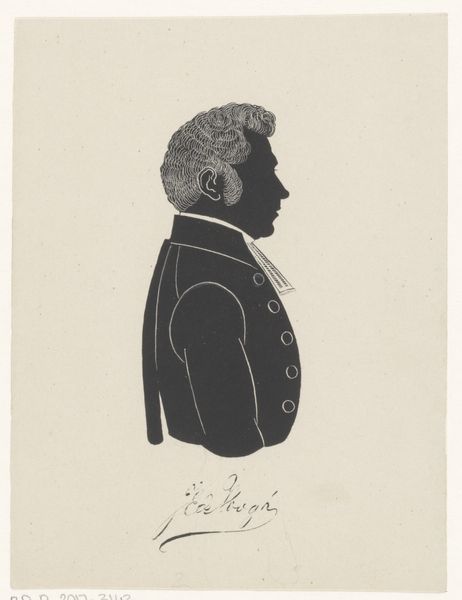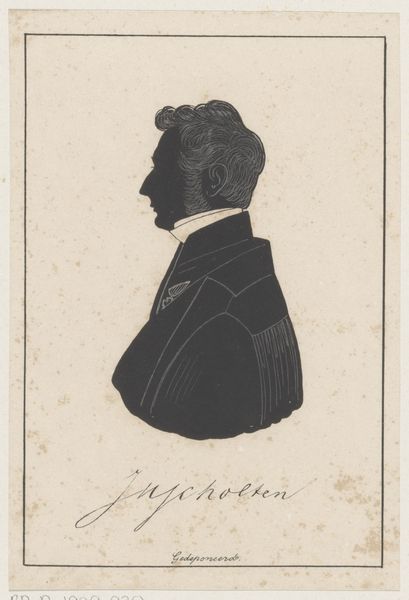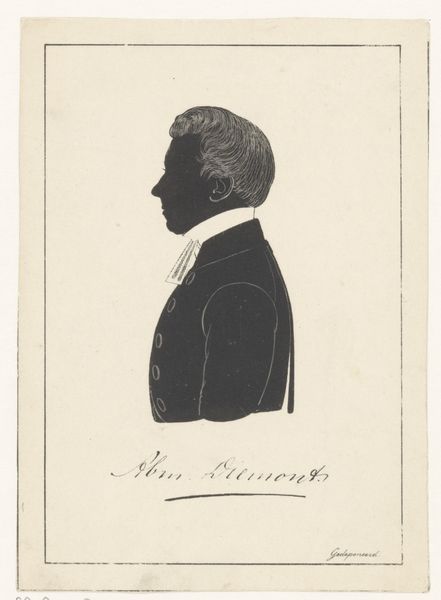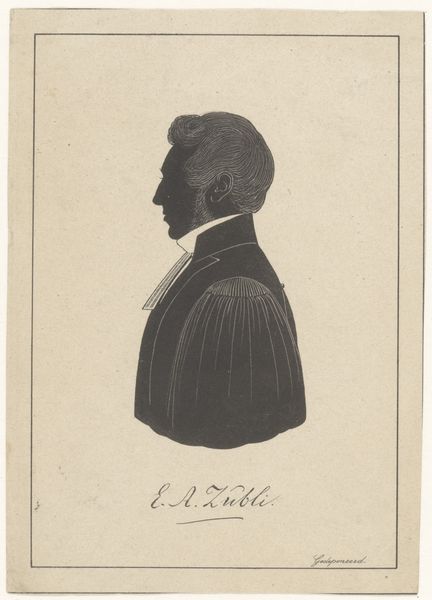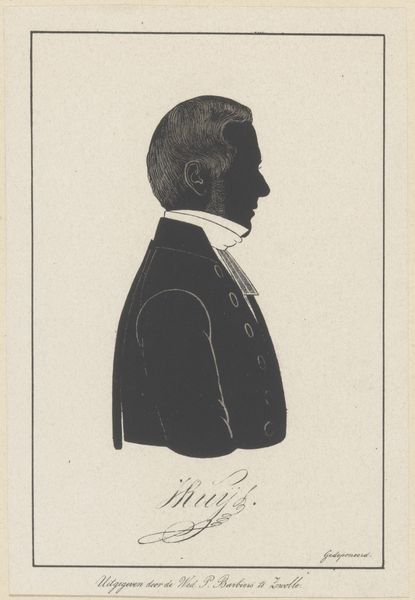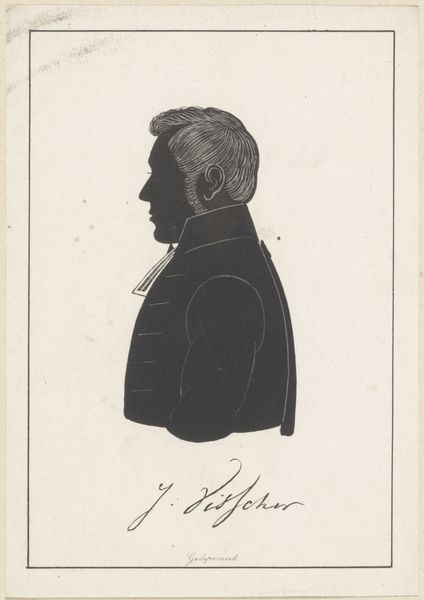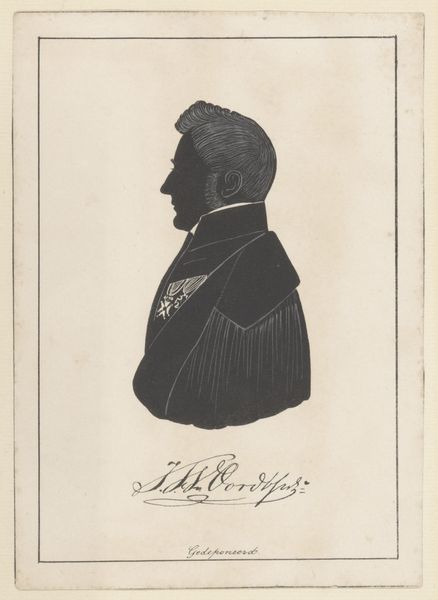
drawing, paper
#
portrait
#
drawing
#
caricature
#
paper
#
geometric
Dimensions: height 114 mm, width 86 mm
Copyright: Rijks Museum: Open Domain
This is Friedrich Heinrich Wilhelm Schröder’s ‘Silhouetportret van de heer Deeleman,’ created sometime in the mid-19th century. During this period, silhouette portraits were a popular and accessible way to capture a person's likeness, a shadow of someone's life. Portraying the subject in profile, Schröder's silhouette aestheticizes Deeleman, abstracting him in a manner that subtly reflects the societal norms of the time. As an art form, silhouettes often served the middle class, documenting family members, preserving a record of themselves for posterity. We can see signifiers of the sitter's profession in his attire, perhaps alluding to Deeleman's social standing and occupation. The starkness of the silhouette renders the subject almost ghostly, leaving us to consider the narratives, and perhaps the emotional weight, of those whose stories are often untold. Consider how this simple yet evocative portrait invites us to reflect on the individuals of the past and how they navigated the world.
Comments
No comments
Be the first to comment and join the conversation on the ultimate creative platform.
